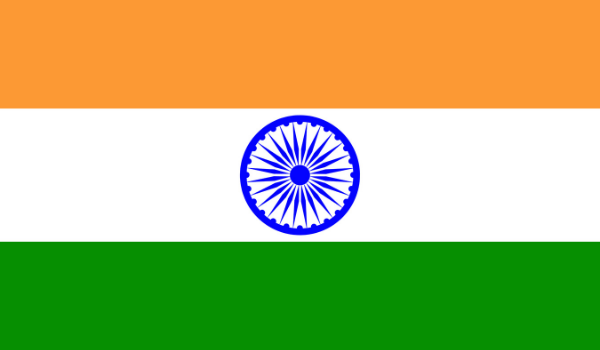Indian Independence Day : Significance and Facts

The 75th Indian Independence Day is quickly approaching, and the country is preparing to commemorate the most significant milestone in the country’s history. Independence Day commemorates India’s liberation from oppressive British rule, as well as the tremendous sacrifices made by our independence heroes. Also see: Independence Day 2021: The Government Invites People To Submit Videos Singing the National Anthem, and How to Participate | Watch
Every year on August 15, the Prime Minister hoists the ‘tiranga,’ or tricolour, above the Red Fort. The Indian National Flag is a source of pride for all Indians and reflects our ambitions and aspirations. Former Prime Minister Jawaharlal Nehru described it as “not only a flag of independence for ourselves, but a symbol of freedom for all humanity.”
Also Read This Article : Independence Day Shayari in Hindi
Significance of Independence Day
The day is significant because it reminds the country of the enormous effort and sacrifice of earlier generations who fought for India’s sovereignty.
On July 22, 1947, the design of the national flag, which is flown from the ramparts of the Red Fort in Delhi on Independence Day, was formally chosen. Jawaharlal Nehru unfurled it for the first time on August 15, 1947.
Lord Mountbatten set the date for India’s Independence Day. Japan surrendered to the Allied Forces on the same day in 1945, bringing World War II to a close.
Five more nations, in addition to India, commemorate their independence on August 15. Bahrain, North Korea, South Korea, the Republic of Congo, and Liechtenstein are among them.
History of Indian Independence Day
The British Empire’s authority in India began in 1757, with the English East India Company capturing control of the whole nation during the Battle of Plassey. During World War I, the Indian independence movement was led by famed leader Mahatma Gandhi. Gandhi steadfastly promoted a peaceful, noncooperation-based manner of protest, which sparked the civil disobedience movement.
India’s quest for freedom paid off after long and arduous campaigns. After the two world wars, Britain began to consider abandoning its dominion in India. The British administration announced in 1947 that all powers would be transferred to India by June 1948. But continued tensions and bloodshed between Muslims and Hindus led to a consensus for India’s division into two independent states.
Also Read This Article : Independence Day Quotes in Hindi
To address this, the British administration recommended on June 3, 1947. That any constitution drafted by India’s Constituent Assembly be inapplicable to areas of the nation that refuse to adopt it. On the same day, Lord Mountbatten, the then-viceroy of India, implemented a partition plan. The Congress and the Muslim League both agreed on Mountbatten’s approach.
Between 300,000 and 500,000 people perished on both sides as new borders were created and the world map was irrevocably altered. On August 15, 1947, at midnight, India earned independence, which was capped with Jawaharlal Nehru’s renowned speech, “Tryst with destiny.”
With the transfer of powers to newly independent Pakistan and India, the great British dominion over India came to an end.
Lord Mountbatten was appointed as the first governor-general of the new Dominion of India, and Jawaharlal Nehru was appointed as the country’s first prime minister. The Constituent Assembly established in 1946 evolved into the Parliament of Indian Dominion.
Facts About India’s Independence
1. Our National Anthem
This may come as a surprise to you, but it is true! Rabindranath Tagore wrote the Indian National Anthem to honour King George V! Yes, indeed! Isn’t it amazing? At the time of independence, India did not have an official national anthem. Jana Gana Mana was composed in 1911. However, on January 24, 1950, it was formally accepted and designated as India’s national anthem.
2. Multi-Lingual Freedom Fighters
The Inspiring Soul of India – Bhagat Singh was proficient in several languages, including French, Swedish, English, Arabic, Hindi, and Punjabi, and he was an avid reader as well.
3. India
The Name: India receives its name from the Indus River, which was the home of the Indus Valley Civilization, which is regarded as one of the earliest civilizations. Our country, on the other hand, is known in Sanskrit as Bhartiya Ganarjya.
4. Indian Flag
4. The Indian flag is made and distributed from a single location in the country. The Karnataka Khadi Gramodyoga Samyukta Sangha (KKGSS), based in Dharwad, Karnataka, is authorised to produce and supply the Indian national flag. The flag is made entirely of hand-spun and handwoven cotton khadi yarn, according to the Bureau of Indian Standards (BIS).
5. Mahatama Gandhi
Even as the country celebrated its hard-won independence on August 15, 1947, the country’s founder, Mahatma Gandhi, was fasting to put a stop to the Hindu-Muslim riots in Bengal.
6. Pakistan achieved independence one day before India
Pakistan commemorates its Independence Day on August 14 in order for Lord Mountbatten, the final British Viceroy, to attend the celebration. This decision was made because Mountbatten. As the last Viceroy of undivided India, was compelled to attend both nations’ Independence Day festivities.
Struggle of India’s Independence
Finally, on 15 August 1947, India regained her independence after a protracted struggle, with many sacrifices of body and blood the outcome of this liberated India.
Mahatma Gandhi, Netaji Subhash Chandra Bose, Chandra Shekhar Azad, Jawaharlal Nehru, Indira Gandhi, Lal Bahadur Shastri, and others were among the prominent personalities who led the struggles.
The day is observed by displaying our national flag and singing our national song in all schools, universities, hospitals, banks, offices, and other types of government and private organisations. Every year on August 15th, our Prime Minister hoists the flag in the Red Fort in Delhi.
The day is a national holiday in the United States. Every year, we commemorate our Independence Day as a homage to this spirit of liberty. As well as the heroism and sacrifices made by many men and women.
Conclusion
Thus, Indian Independence Day is observed for a variety of reasons. To be more specific, the day is commemorated to keep the spirit of patriotism alive while also enjoying the spirit of freedom.
Independence Day is a national holiday in our country, therefore it is also a time to reconnect with loved ones and spend the day together.
Read More:
What is The Role of Primary Schools in Gurgaon in The Early Development of a Child?





